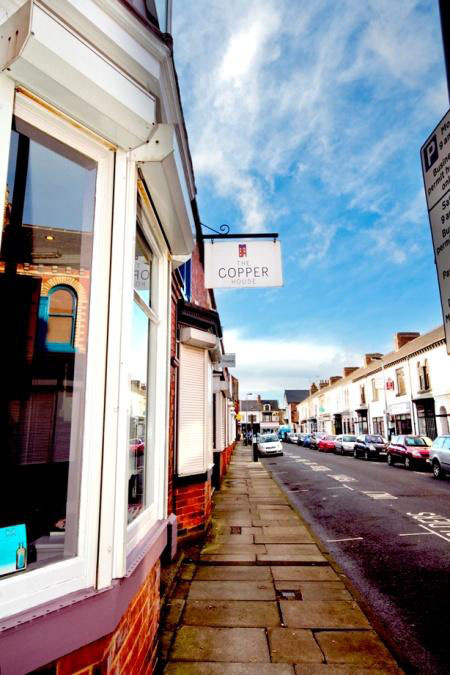In June 2009, writing in Sublime Magazine I called for a creative insurgency, a call for the creative community to show politicians and councils how we can benefit society and help the economy along (you can read a version
).
In the 90s during our Red or Dead days, Gerardine, I and the team regularly visited New York we witnessed creative pioneers colonise parts of the Lower East Side and of course SoHo and the Meat Packing District, only to be out priced pretty quickly as landlords did the deals with multinational brands, retail brands and restaurateurs.
Last month we booked into an airbandb in New York for a long weekend. Having heard so much about how Brooklyn had changed over the past couple of decades (so much so that the world’s most famous footballer named one of his sons after it!) we opted to stay in Brooklyn. There has been a lot written about Williamsburg over the past few years and some of it pretty cynical, especially with the word “hipster” becoming a derogatory term by some overly cynical types. We did raise our eyebrows when in the first vintage shop that we went in and asked a question about the ferry over to Manhattan the reply from a young shop owner was “I don’t really know much about that, we never go over to Manhattan there is everything we need here in Brooklyn”. Another couple of days later we understood where she was coming from. Williamsburg is an example of where young creative types have taken a once, unloved, once low value area of a city and made it their own. The place is a hive of indie cafe’s and stores all set in a distinctly higgledy piggledy collection of buildings, streets and open spaces. It’s human in scale, serendipitous, vibrant and a credit to those, mainly youthful, urban pioneers who have proved yet again that it doesn’t need massive government intervention, pension funds, investment by multinationals and chains to create vibrant and stimulating parts of our towns and cities. The owner of that vintage shop did have a point, she and the small army that have joined the exodus from Manhattan have created an antidote to corporate, sometimes overpowering, New York and apart from a few not to be missed things in Manhattan (is The High Line the greatest piece of urban landscaping/the finest example of upcycling in the world?) then Brooklyn can provide everything you need.
Brooklyn has various areas all at different stages in their upward cycle. The most developed is possibly DUMBO (down under Manhattan and Brooklyn overpass), a place of great urban eye candy, with evocative old warehouses vying with those enormous bridges for attention. Here corporate New York has latterly come to the party, but the creative roots of DUMBO set the tone and the food markets, architectural and landscape interventions are most definitely responding to the areas rediscovery by artists, designers and creative entrepreneurs.
Bushwick in Brooklyn is at the early stages of colonisation. This industrial area with the odd stunning street of old townhouses makes for an eerie part of town. The quirkiness of faded beauty set amongst modern industrial dross fits a creative aesthetic and in part you can see the long suffering indigenous residents coming to the party by working harder to bring their cafe’s and bars into the modern world and the incoming population are out in the streets supporting them. If this is gentrification then bring it on.
This creative insurgency that through “early adopters “ (I don’t like the term but it does the descriptive job!) brings down at heel places a new social and financial vibrancy is a worldwide phenomenon from the feted ones like the Mitte District in Berlin to the various eastern enclaves that have seen the axis of influence shift in London to the less feted ones like Baker St in Middlesbrough, yes Middlesbrough.
This week I was introduced to Middlesbrough’s Baker St and came away with the view that the Williamsburg model can work in much smaller places. Middlesbrough is a relatively small town that is clearly attempting to punch above its weight creatively. From the art institution MIMA to the wonderful work of the university, the town is attempting to forge a creative future. Baker St is a slightly, but only slightly “off the beaten track “ street of terrace houses that during the last century had largely been taken over by accountants and lawyers to create a dedicated district. As this sector consolidated and shifted a couple of pioneering young start ups moved in and put a marker in the ground. Some years later, to their credit, the council has started to support Baker Street and its community and as long as they carry on with their support and as long as the retailers stick it out and a few more buildings are colonised. Most importantly, if the local media and population start to support Baker Street more, then this little low rise street can have an enormous impact on the outside perception of Middlesbrough (as well as providing a welcome antidote to the homogenous chains).

Baker St in Middlesbrough – a residential town centre street that has become the beating creative, entrepreneurial heart of the town.
Chilli Cake brings a touch of the Seattle cafe scene to Middlesbrough complete with vegan options.
A hairdressers in the “front room” of a house on Baker St.